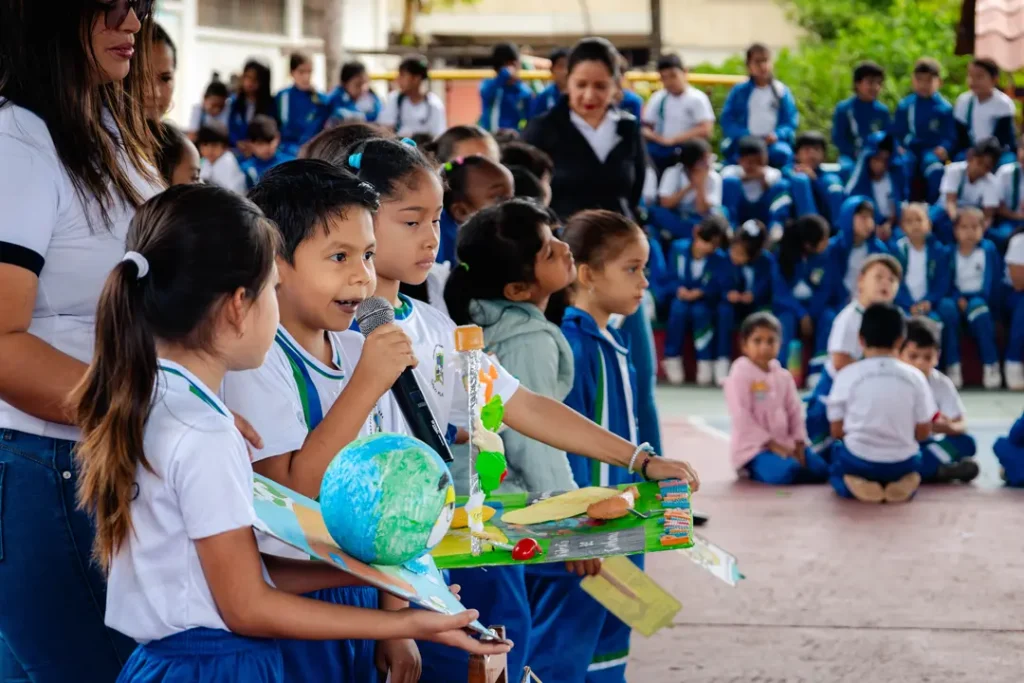The Galapagos Islands are a biodiversity treasure trove, home to unique species found nowhere else on earth, including the iconic giant tortoises. Over three centuries, these majestic creatures were driven to the brink of extinction. Today, they are making a remarkable recovery, thanks in large part to the dedicated efforts of Galapagos Tortoise breeding centers. These centers are the nucleus of one of the most successful endangered species repopulation efforts ever undertaken.
Since the discovery of the Galapagos 500 years ago, the archipelago’s endemic giant tortoises have faced drastic environmental changes, including severe threats to their survival. Unregulated hunting and the introduction of invasive mammals pushed three species into extinction and the populations of most of the remaining 12 species to dangerously low numbers. However, thanks to scientific advances, conservation innovation and the commitment of dedicated institutions and scientists, the Galapagos giant tortoises are getting a second chance.
The first Giant Tortoise breeding center was established in the 1960s as a joint effort between the Galapagos National Park Directorate (GNPD) and the Charles Darwin Foundation (CDF), and quickly became the cornerstone of tortoise recovery efforts.
Today, three breeding centers provide a safe haven where thousands of young turtles grow up under the care of dedicated caretakers until they are large and strong enough to return to their natural habitat. Since their establishment, these centers have successfully reintroduced more than 10,000 tortoises to their native habitats, an effort that is now being carried out through the collaborative work of the GNPD and the Galapagos Conservancy under the Galapagos Program Initiative.
The Crisis That Led to the Creation of Breeding Centers
To understand the vital work being done by the GNPD and Galapagos Conservancy, one must first understand the depth of the crisis that prompted the creation of the breeding centers.
By the 1950s, scientists were sounding the alarm: giant tortoise populations had been devastated by centuries of human exploitation and the spread of invasive species, including goats (Capra hircus), pigs (Sus scrofa), and black rats (Rattus rattus), which posed a variety of threats.
To combat this crisis, the first Giant Tortoise breeding center was established in 1965 on Santa Cruz Island. This was eventually followed by the creation of two additional centers on Isabela and San Cristobal islands.
How Do the Breeding Centers Work?
The breeding centers follow a carefully designed process to maximize hatching success and survival to support population recovery:
- Egg collection and incubation: Eggs are collected from tortoise nests in the wild and transferred to the breeding centers, where they are incubated under controlled conditions, ensuring their safety from predators and harsh environmental conditions.
- Temperature control for sex determination: Scientific research has shown that incubating tortoise eggs at higher temperatures produces more females, thereby accelerating population recovery.
- Safe rearing: Once hatched, the young tortoises remain in the protected environment of the centers for at least five years, the threshold age at which they are strong enough to survive on their own in the wild.
- Release into native habitats: After 5 years, young tortoises are returned to their home islands to grow for another 10 years until they mature and start breeding in the wild on their own.
This program has saved several species from extinction, including the Espanola Island tortoise (Chelonoidis hoodensis). In the late 1970s, only 14 Espanola tortoises remained in the wild, and another was discovered in captivity in California. Thanks to the concerted efforts of the breeding program, these 15 turtles produced more than 2,000 hatchlings in captivity. All of these have been successfully reintroduced to the Spanish island, where the population is now recovering on its own.
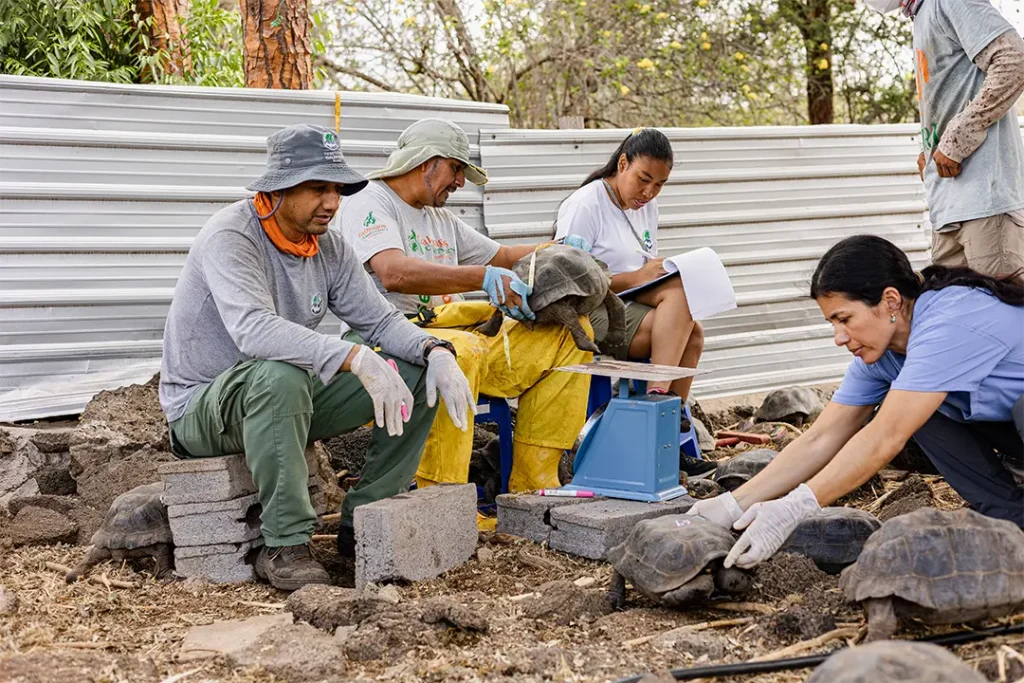
©Galápagos Conservancy
The Science Behind Giant Tortoise Conservation
The conservation of Galapagos giant tortoises depends not only on dedicated human efforts but also on cutting-edge science and technology that guides every stage of their recovery. Over the years, breeding centers have integrated numerous scientific advances, which have significantly improved hatching success rates, captive breeding techniques and survival in the wild.
One groundbreaking innovation was the introduction of automated incubators.
These state-of-the-art systems, equipped with microprocessors, enable precise temperature control and reliable hatching, ensuring optimal conditions for turtle embryo development and survival. Since their implementation in 2017, these incubators have achieved an impressive 90% hatching success rate, a breakthrough in turtle conservation. In the wild, less than 10% of turtle eggs laid hatch. Increasing hatching rates greatly increases the number of turtles and accelerates their recovery.
Scientific research has also played a key role in revealing how temperature influences the sex of hatchlings. Con este conocimiento, los programas de cria han refinado los protocolos de incubacion para favorecer la produccion de hembras, una estrategia crucial para acelerar la recuperacion y asegurar la estabilidad a largo plazo en la naturaleza.
After incubation, hatching, and rearing, successful tortoise reintroduction requires rigorous ecological assessments. Before each release, experts carefully evaluate environmental conditions to determine the optimal habitat and the best window for return, specifically, after the rains have created abundant forage for the young turtles.
Additionally, field studies have been instrumental in identifying the optimal size and age for reintroduction, maximizing survival rates while refining conservation strategies and resource allocation. Continually refining our methods for monitoring tortoise populations in their natural habitat helps measure the success of these efforts. Implementing these methods ensures that every turtle released has the best chance of thriving in the wild, reaffirming the long-term success of population restoration programs.
Sustaining Giant Tortoise Recovery: Challenges and Opportunities
While there has been considerable progress in giant tortoise restoration efforts, significant challenges remain in ensuring their long-term survival.
Invasive species continue to pose a major threat on certain Galapagos islands: black rats and feral pigs raid nests, destroying eggs and hatchlings, severely impacting population recovery; feral dogs prey on juveniles in some locations, and fire ants threaten hatchlings in others; cattle also damage tortoise habitat and nests; some invasive plants, mainly guava and blackberry, alter tortoise habitats, making them impenetrable even to adult tortoises.
Climate change presents an additional risk. Even small temperature fluctuations in nesting sites can disrupt egg development. Unfortunately, these changes also generate more favorable conditions for invasive species. Understanding these environmental changes is essential for developing adaptive conservation strategies to safeguard turtle populations.
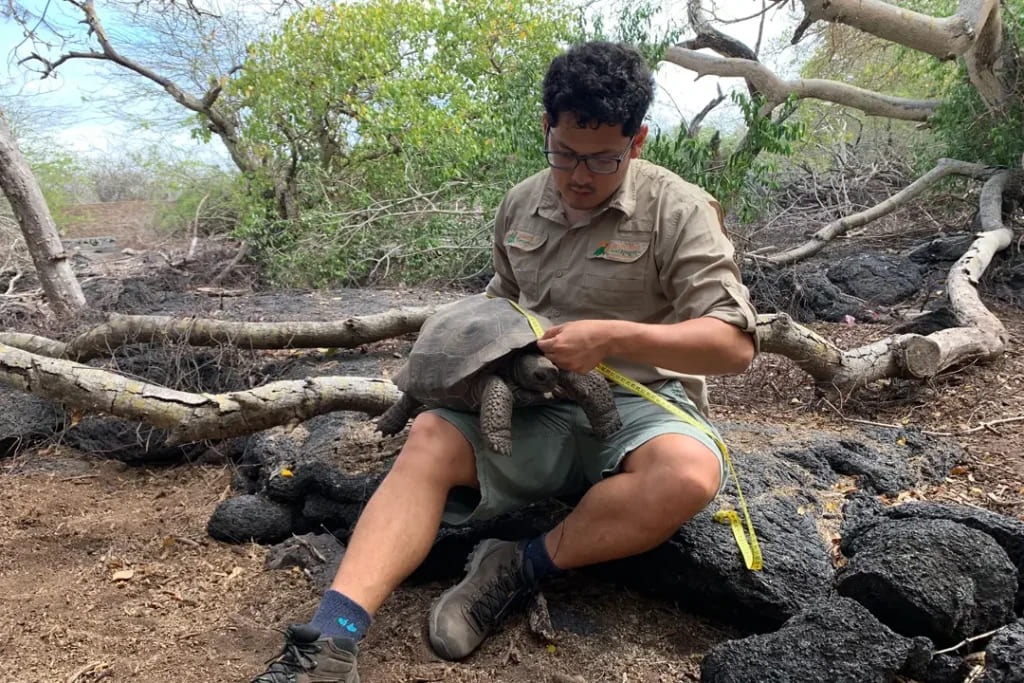
©Galápagos Conservancy
The Galapagos Islands were officially annexed by Ecuador on February 12, 1832. This marked the beginning of a new era in the political, cultural and ecological history of the archipelago. This momentous event in Ecuadorian History marked a major political milestone, and began a process of conservation and protection of one of the most precious natural sanctuaries of the world.
After gaining independence in 1830 from Gran Colombia, Ecuador wanted to consolidate its territorial sovereignty. Jose de Villamil was a distinguished military leader and politician who led the expedition to secure the annexation of Galapagos Islands by the newly formed Republic of Ecuador. Su estrategia y liderazgo permitio a las autoridades ecuatorianas reconocer y afirmar el control sobre este extraordinario territorio.
On February 12, 1832 President Juan Jose Flores, after receiving reports from General Villamil issued the official decree that officially integrated the Galapagos Islands into Ecuadorian Territory . This was the beginning of an historic relationship between Ecuador, and this amazing archipelago.
Soon after annexation by Ecuador, the first human settlement was established in the Galapagos. The settlement was intended for convicts and part of a plan to populate the Galapagos Islands. This human presence endured extremely harsh conditions and laid the foundation for future settlements, and eventually colonization of the Galapagos Islands. It also marked the beginning of a complex interplay between humans and their natural environment.
The Galapagos Islands, with their unique wildlife and strategic location, have drawn global attention over the years. During World War II the United States built a military facility to protect the eastern Pacific and the Panama Canal. This underscored the geopolitical importance of the archipelago.
This international connection is still vital today, but it has a new mission: conservation. The Galapagos Islands have become a symbol for environmental stewardship through global collaboration. They inspire nations to work together in order to protect their unique ecosystems.
Galapagos Conservation works tirelessly to protect the flora, fauna and ecosystems of these islands. We have made great strides with the help of many dedicated individuals and partners, including those based in the United States.
Galapagos’ story is more than just its annexation. It is also a testament of a world community dedicated to its preservation. The islands, once viewed as desolate and uninviting, have become one of the most precious natural reserves in the world. Despite the challenges of climate change and invasive species, there is hope in those like you who recognize and champion this place’s profound natural legacy.
We reaffirm, as we celebrate this historical milestone, our unwavering dedication to protecting the Galapagos Islands for future generations. It is not only a local duty to preserve this unique paradise, but a global mission which unites all of us in protecting its natural wonders.
You are part of the story, and you have helped to conserve Galapagos.
Visit Galapagos Conservation to learn more about what we do and how you can protect Galapagos.
Lonesome George is a symbol of the Galapagos biodiversity and a conservation icon around the world. His legacy continues the fight to preserve unique species.
This image combines the Wall of Tears built by prisoners during the 20th century with a Galapagos tortoise, symbolizing both the rich history of humanity and the natural beauty of the archipelago.
Baltra, 1960s: Tourists and locals arrive in Galapagos at the beginning of tourism development in the archipelago.
The iconic Ninfa Bar was a hub of social activity for both locals and tourists during the early days when tourism increased in Galapagos.
The fishermen of Galapagos clean their catch as frigatebirds circle overhead, illustrating the relationship between the fishing communities and the wildlife on the islands.
A photo from the past of Puerto Ayora Bay. It shows sailboats, wooden boats, and the Mistral. The Mistral was one of the very first tourist boats in the archipelago. This marked the beginning of tourism on Galapagos.
A historical scene of a settlement on horseback, and a family of visitors or residents, navigating the archipelago during the colonization years.
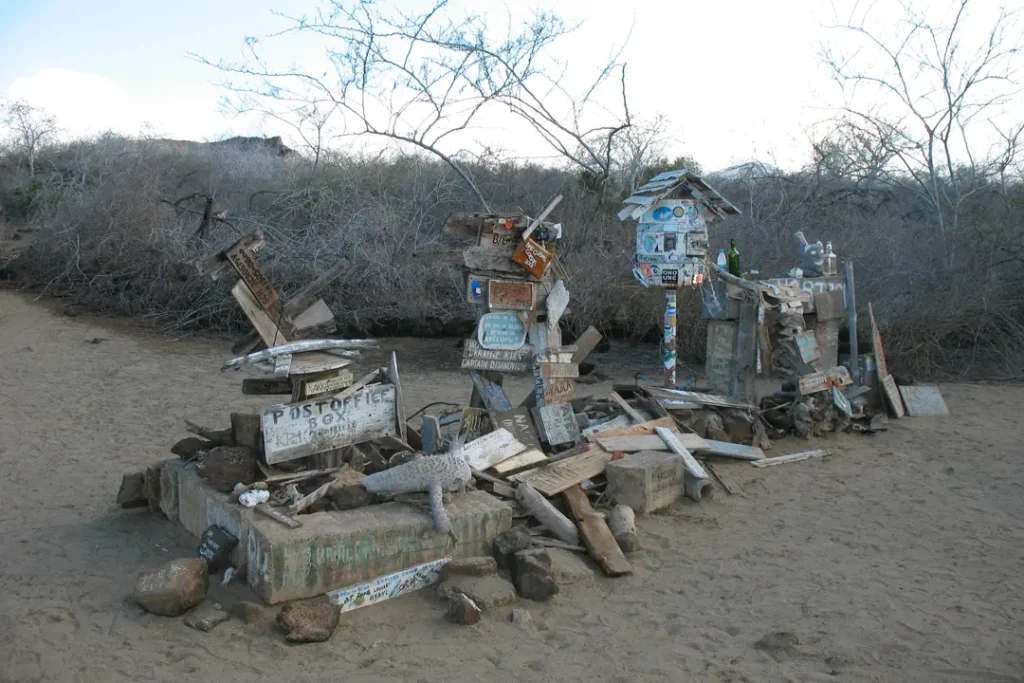

Photo: ©Lori Ulrich
The Galapagos Islands conservation depends on adopting innovative technologies. In this installment of our series about science and technology to conserve the environment, we examine how drones can help protect the fragile eco-systems of the Archipelago. Drones combine aerial perspectives and advanced tools to enable more precise and efficient monitoring. This helps protect endemic species, and study hard-to reach habitats.
Drones: a new era in environmental monitoring
Drones have revolutionized the way we monitor ecosystems on Galapagos. Galapagos Conservancy uses drone technology to advance conservation initiatives with the permission of the Galapagos National Park Directorate.
Drones can fly over areas that are inaccessible, such as Isabela Island’s active volcanic cones or Fernandina Island’s rugged coasts. This allows them to provide detailed and real-time images of ecosystems.
Drones equipped with GPS and high-resolution cameras capture precise images that help researchers monitor vegetation health and study animal behaviour. These capabilities can be combined with other technologies such as ground-based camera traps, which have a limited range and scope. Drones provide a bird’s eye view that complements these ground-level technologies. They can be used to gain a better understanding of ecosystems and track wildlife in vast areas or difficult-to-reach places, as well as detect changes in the landscape.
Supporting Terrestrial Ecosystem Conservation
The use of drones is essential for the monitoring of terrestrial ecosystems on Galapagos. They can capture images of key species and remote landscapes.
Drones are especially useful in difficult areas, such as the Wolf Volcano of Isabela Island — home to a unique species giant tortoise and pink iguana . They allow for efficient data collection and provide insight into habitat conditions. They also support efforts to save these iconic species.
Drones are versatile enough to be operated at various altitudes, in a variety of weather conditions and capture high-resolution photos that provide valuable information about wildlife, vegetation and other environmental factors.
Drones can also be used to survey large areas, detect invasive species, and take swift action in order to protect the native biodiversity.
Conservation and the Future of Conservation
Drones will continue to be a valuable conservation tool in Galapagos as technology advances. Drones enable more precise ecosystem analyses and support rapid adaptation to changes in the environment, contributing to informed decision making and effective conservation strategies.
Galapagos Conservancy, with the support of its donors and partners will continue to harness drone technology and other innovative solutions to protect the unique biodiversity of the archipelago, and ensure that it is preserved for future generations.
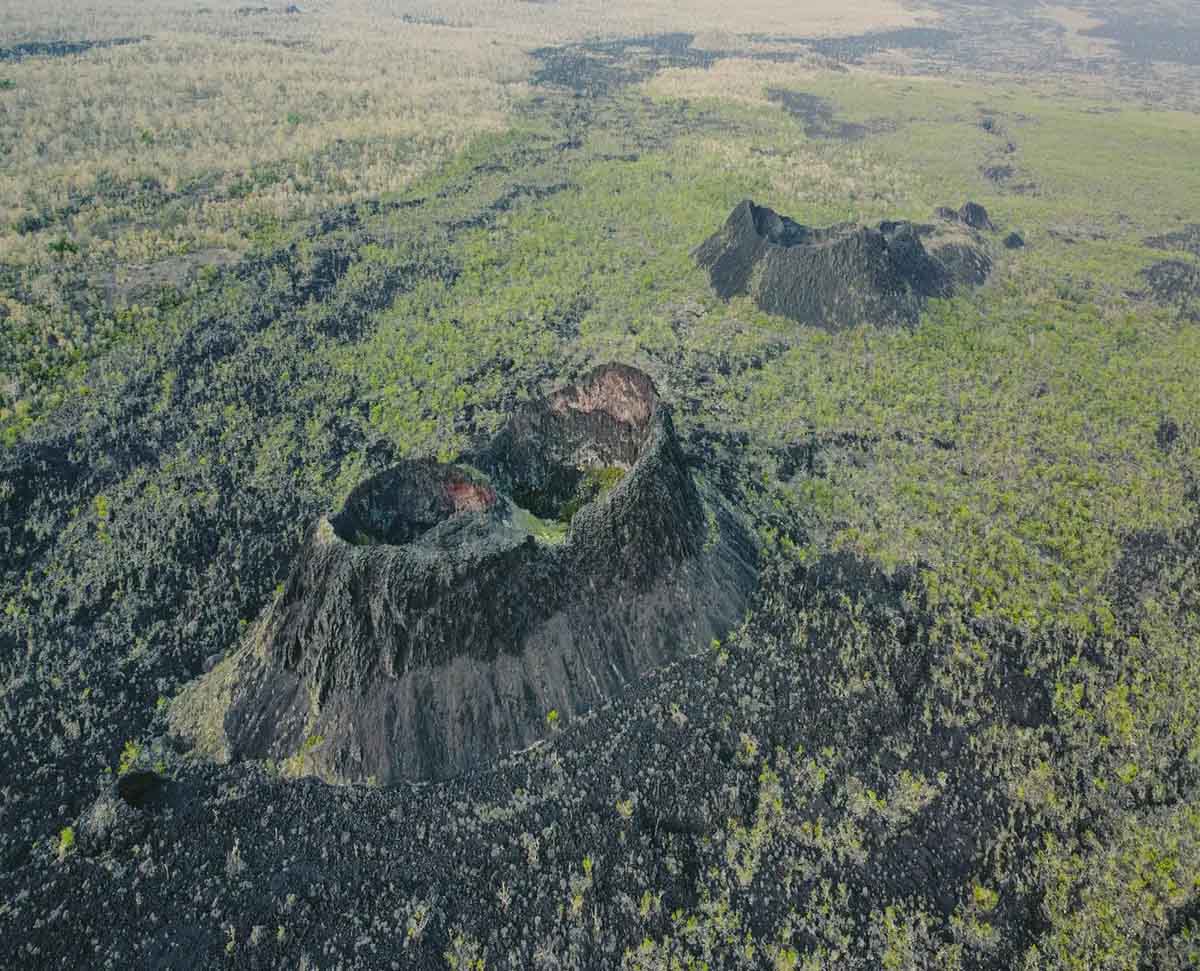
Photo: ©Galápagos Conservancy
In the crater on Isabela Island of Wolf Volcano, a tiny population of Giant Tortoises (Chelonoidis Becki) have survived in one the harshest environments of the Galapagos. These tortoises are isolated on a small flattened plateau of the wall of the crater that collapsed many years ago. The discovery of young tortoises, which face unique challenges for their long-term existence, in this remote region offers new hope that they can become a self-sustaining community.
A Remarkable Discovery
A small population of 50 tortoises has adapted to the harsh conditions of the volcano crater. The area is only 0.8 square miles (2.2 square kilometers), and the walls are over 200 meters high. They rely on seasonal rains and scarce vegetation to survive. The tortoises cannot climb the walls of the crater and communicate with each other.
This discovery is a positive sign of natural reproduction. This discovery not only demonstrates their resilience, but also highlights the importance of continuing conservation efforts.
Finding juveniles in an environment so harsh and isolated highlights their amazing resilience and ability thrive in extreme circumstances. This is an encouraging sign that these tortoises have been successfully reproducing, and maintaining their population,” said Dr. Jorge Carrion is the Director of Conservation for Galapagos Conservancy.
Technology Advancing Conservation
Galapagos Conservancy uses cutting-edge technology in order to better understand these tortoises and protect them. Researchers can collect critical data by equipping individuals with satellite tracking devices. This will help guide conservation strategies.
These trackers are vital tools for studying how tortoises adapt to their environment. “It’s a continuous effort, but it is essential for the survival” of this unique population,” Dr. Carrion says.
The Challenges of the Future
The crater is still a harsh habitat, despite this encouraging discovery. Food and water shortages–especially during prolonged dry periods–continue to pose a significant challenge. The presence of juveniles indicates that the population is likely to grow and persist.
Galapagos Conservancy is committed to the protection of these tortoises. We are committed to ensuring that future generations will be able to see these amazing creatures thrive in one of Earth’s most unique landscapes.
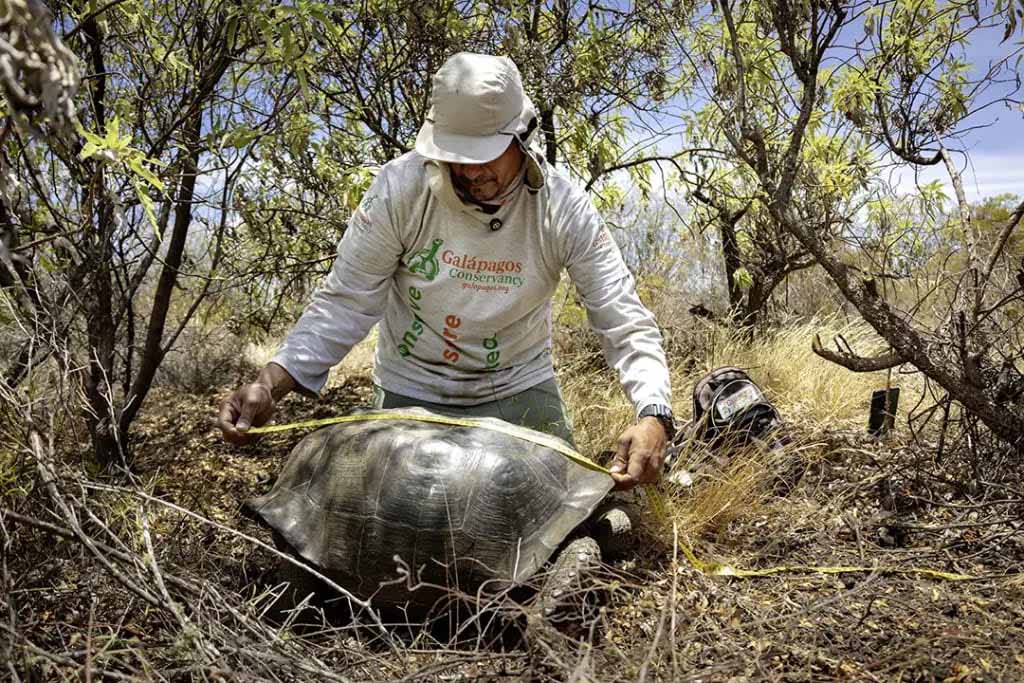
©Galápagos Conservancy
In order to promote environmental awareness and appreciation of the archipelago’s unique biodiversity, Galapagos Conservation in collaboration with educational institutions located on Floreanaand Isabela Islands recently organized a contest focusing on the protection of the iconic Galapagos Giant Tortoises.
Children and students participated in the contest with enthusiasm, displaying their creativity and imagination through vibrant and colorful artwork. Their drawings also conveyed messages of love and affection for Galapagos, its giant tortoises and the archipelago. The children’s art pieces not only showed their talent, but also their dedication to the conservation of these amazing creatures – an undeniable icon of the archipelago.
Celebrate the Winners
Four students received recognition for their originality and artistic quality. YazuProano, Luis Quijosaca, AlejandroMorocho, and Daniela Quituna, all from Floreana Island and Isabela Island respectively, were recognized for their outstanding drawings. They showed both an exceptional level of creativity and a profound understanding of giant tortoises, and the importance of protecting them.
The winning artworks showed that Galapagos giant tortoises were not only one of the most fascinating and iconic species, but also a well-known symbol of the archipelago. They are a major attraction to thousands of tourists each year. The students’ drawings emphasized the importance of protecting tortoises in maintaining biodiversity and the ecological integrity on the islands.
Collaboration with the Education System
This contest highlighted the importance of engaging young people and children in activities that strengthens their connection to nature and commitment to conservation of Galapagos. Jenny Macias is our educational advisor. She highlighted the positive impact the initiative has had on fostering environmental values and respect at a young age. She said that these educational activities encourage creativity and also help to build an emotional bond with the natural wonders of Galapagos.
Inspiring future generations
Galapagos Conservancy is proud to be the organizer of this initiative that combines art, conservation, and education. The students’ dedication is a testament to the importance of investing into initiatives that promote a love of Galapagos, and its unique species.
This contest is a powerful reminder of the importance of environmental education in forming future Galapagos guardians, who will be responsible to preserve these natural treasures.
A young student of the Jacinto Gordillo Educational Unit, Isabela, addresses the community to highlight the importance protecting giant tortoises.
The students shared their messages and showcased their work with the community.
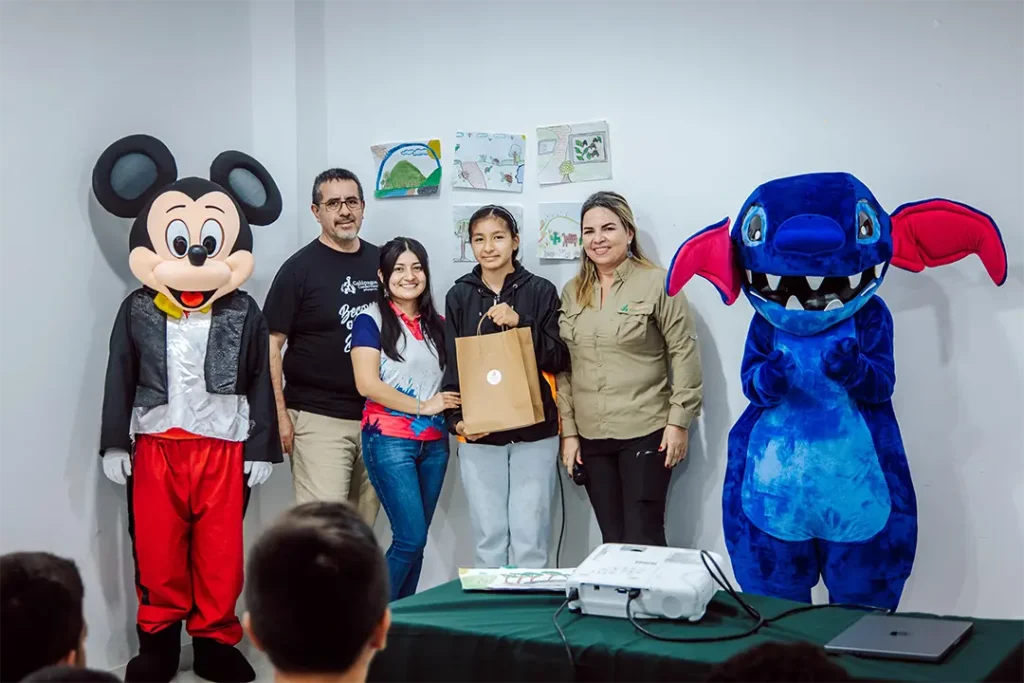
©Galápagos Conservancy
Every year, on the 24th of January, the world celebrates International Day of Education. This day is dedicated to highlighting the importance of education as an essential human right and the power it has to create a sustainable future. Galapagos Conservation uses this occasion to reaffirm its commitment to education, especially in protecting and conserving the unique Galapagos Archipelago ecosystems.
We are proud of all the progress that we have made as we enter our ninth year of the Education for Sustainability Program. This program was launched in 2016 with the collaboration of Ecuador’s Ministry of Education. We have been providing teachers with the resources and training they need over the years to integrate sustainability issues into the lessons of children and young adults. Our goal was to instill a sense of responsibility for the environment, which is essential to ensuring long-term preservation of this fragile natural environment.
The New Focus for 2024
The year 2024 will be remembered as a landmark for our educational initiatives. Our commitment to quality education was reaffirmed by integrating sustainability at the heart of our work. Thanks to the collaboration of local and national experts, teachers in Galapagos received innovative, modern teaching materials. These professionals worked closely together with educators from across the archipelago to facilitate workshops, offer guidance and promote project-based learning tailored to local contexts.
Jenny Macias is our educational advisor and she emphasizes the importance of adapting local realities. “Our goal to empower teachers in integrating sustainability into their curriculums and adopting active teaching methods to meet the unique local needs.”
We also want to encourage children and youth to play a more active role in the building of sustainable communities. We bring teachers, students and families together to tackle local challenges using sustainable, context-driven, solutions by fostering learning communities in schools.
Education as a catalyst for conservation
On International Day of Education we celebrate not only the right of education but also its transformative powers in advancing sustainability and conservation. Galapagos Conservancy understands that sustainability education is essential to preserve our unique ecosystems, and foster a harmonious relationship between the local communities and the natural environment.
Our educational programs aim to inspire and motivate a new generation to protect and conserve the natural heritage of Galapagos, with a vision to extend this legacy beyond the Galapagos Islands. Education can be a powerful tool to encourage positive change and the integration of sustainability in all aspects of our lives.
Galapagos Conservancy will continue to place education at the forefront of its mission to ensure a sustainable and prosperous future for all generations.
